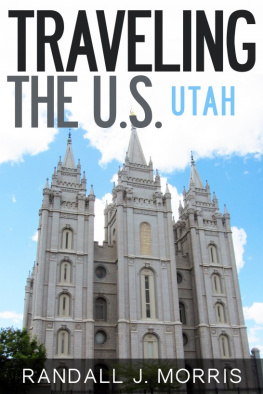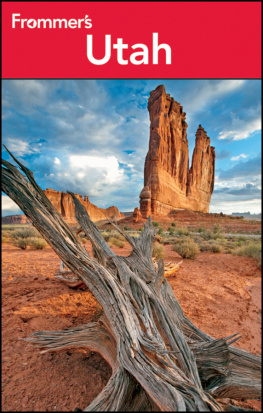BLACK
UTAH

BLACK UTAH: STORIES FROM A THRIVING COMMUNITY. Copyright 2022 Soul Excellence Publishing
All Rights Reserved. Apart from any fair dealing for the purposes of research or private study, or criticism or review, as permitted under the Copyright, Designs and Patents Act 1988, this publication may only be reproduced, stored or transmitted, in any form or by any means, with the prior permission in writing of the copyright owner, or in the case of the reprographic reproduction in accordance with the terms of licensees issued by the Copyright Licensing Agency. Enquiries concerning reproduction outside those terms should be sent to the publisher.
Interior design by THE COSMIC LION
ISBN 978-1-7372000-7-9 (color print)
ISBN 978-1-7372000-9-3 (black & white print)
ISBN 978-1-7372000-8-6 (ebook)
With Special Thanks To:
INTERVIEWS:
Young OG Perspective
SPONSORS:
Workers Compensation Fund
Intermountain Healthcare Zions Bank
Contents

James Jackson III
Community Leadership:
Emerging and Veteran
Change-Makers
Community Leadership:
Shaping Law & Policy
in Utah and Beyond
BLACK
UTAH

T he best snow on Earth with arguably the best mountain lands in the country. Five national parks full of amazing hiking trails, mountain and rock formations, and majestic landscapes. Business reviews and economists rank Utah the top in the country for business and opportunity. The home base of the LDS Church. This is usually how Utah is identified. What is not associated with Utah is diversity, particularly, a home to African Americans.
As a native Utahn, I never knew or understood an environment where African Americans were the majority of the population. I have visited many minority majority places to get a taste of what it would be like, but it was never enough to take me away from Utah. Every-thing mentioned at the beginning has created incredible opportunities for me and my family.
The mission of the Utah Black Chamber is to make these opportunities more visible and create moreto show Utah in a different light than what has been perceived. Utah has many Black citizens not just surviving but thriving, being pioneers for change, and creating a culture for all of us to call Utah home.
What most do not know is that Utah has been home to African Americans even before the LDS pioneers arrived in Utahs territory in 1847. Twenty-five years prior to Brigham Young arriving, James Beckwourth joined the Rocky Mountain Fur Company in Cache Valley of Northern Utah. He became known as a prominent fur trapper and mountain man. He was known for his folklore adventures. He claims he was captured by the Crow tribe thinking he was the lost son of a Crow chief. While living with the Crow people, he rose to the position of Crow chief. Later in life, Beckwourth discovered the Beckwourth Pass, a low-elevation pass through the Sierra Nevada. It was originally a Native American pass through the mountains. He improved the trail to allow people to travel more quickly and safely.

Brigham Young came into Utah with three slaves that still have ancestors in Utah to this day. The names of Oscar Crosby, Hark Lay, and Green Flake are inscribed on a tablet on a Brigham Young monument in the middle of downtown Salt Lake City, in the intersection next to the Salt Lake Temple. These were the first three African Americans to arrive in Utah territory. When Brigham Young became ill near the present UtahWyoming border, Green Flakeas well as Hark Lay and Oscar Crosbyjoined a group of men under Orson Pratts leadership to find the best route through the mountains to their destination in the valley. They formed what is known as the advance company. There were over a half-dozen Black families that arrived with Brigham Young, and Green Flake was recorded to have been the leading figure among the families and maintained a friendly relationship with Brigham Young until he died in 1847. Not much is known about Crosby and Lay. Both men traveled to Utah with a group of Mississippi Mormons that made a difficult journey from the South to Winter Quarters and then west with the first pioneer company in 1847. Like Green Flake, Crosby and Lay helped forge a road through Emigration Canyon and worked to establish the initial settlement in the Salt Lake Valley. By the end of 1847, its recorded that there were perhaps a dozen African Americans living in Utah. From that small number, the Black community would grow and change during the next century and a half.
The military was the next expansion of Utahs Black community. Between 1866 and 1900, the Black 9th Calvary troops of Fort Duchesne of eastern Utah were brought in to fight the restless Ute tribe. The Native Americans named these troops Buffalo Soldiers, for their dark curly hair and the way they fought resembled that of a buffalo.
In 1896, Fort Douglas in Salt Lake City brought six hundred Buffalo Soldiers through the 24th Infantry. Their families quadrupled the citys Black population. American society was highly polarized by race in the 1890s, and Utah was no exception. Most African Americans still lived in the former slave states of the South, where they experienced severe restrictions on their social and legal rights, including frequent violence. Salt Lake Citys small African American community did not experience much outright violence, but Utahs white population generally considered blacks second-class citizens. Minstrel shows, jokes, advertisements, and police behavior toward blacks demonstrated this attitude and reinforced negative racial stereotypes.

After the Emancipation Proclamation, the railroad jobs were the best paying jobs for Black Americans, although they were paid significantly less than the white railroad works. In 1869, the Ogden Union Station recruited emancipated slaves to work on the railroad. Black and Chinese railroad workers played an integral part in the development of the Transcontinental Railroad. The railroad workers worked on the ties and tracks and inside the railroad cars. They were cooks, porters, and waiters.
The growth of the Black railroad employees gave birth to a Black ecosystem in Ogden, Utah. A couple of the most prominent Black businesses were the hotel and the Porter and Waiters Club. The club was a host to many popular jazz musicians during that time, such as Duke Ellington, Count Basie, Nat King Cole, Louis Armstrong, Cab Calloway, and Ray Charles. Joe McQueen, a local jazz legend, performed with many of these artists. McQueen was a saxophonist from Dallas, Texas, who arrived in Utah in 1945. He toured with bands around the country, found a home in Utah, and played saxophone in clubs, solo, and with his own band up until he died at the age of 100 in 2019.
The porters and waiters would come to this club as other establishments didnt allow African Americans at the time. The Porters and Waiters Club would allow the railroad employees to not only enjoy the entertainment but stay overnight. It was the only outlet for jazz or Black entertainment in the state at the time. Black musicians were denied to play anywhere else and would come to the club to perform for their fans.
Next page









